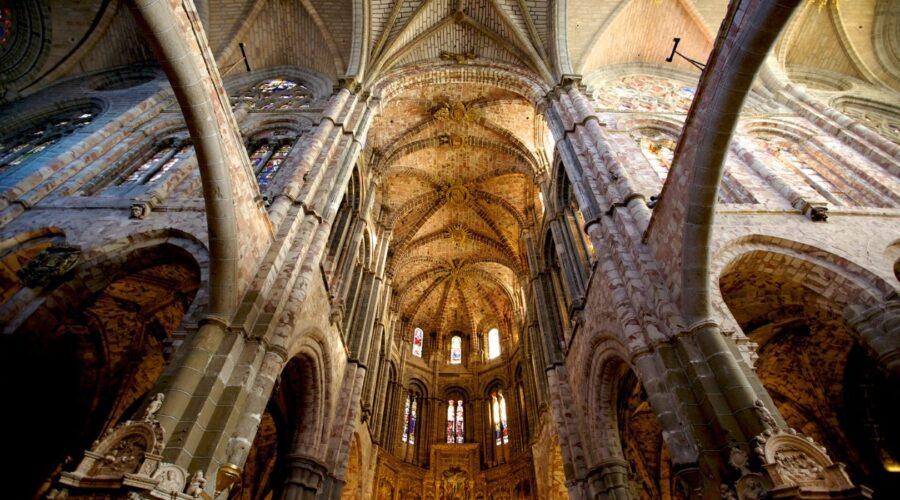Your cart is currently empty!
Unveiling the Sacred Mystery of the Holy Mass: A Comprehensive Guide

Introduction
The Holy Mass, celebrated within the Catholic tradition, holds a central and profound place in the faith and lives of its members. It is a sacrament, an encounter with the divine, and a commemoration of Christ’s life, death, and resurrection. This comprehensive guide aims to illuminate the multifaceted nature of the Holy Mass, providing a deeper understanding of its history, significance, and components.
Historical and Theological Foundations
Origins and Evolution
The roots of the Holy Mass can be traced back to the Jewish Passover meal. The early Church adapted this tradition, incorporating elements of Jesus’ Last Supper with his disciples. Over time, the structure and rituals of the Mass have evolved, influenced by liturgical movements and theological developments.
Theological Significance
The Holy Mass holds great theological significance. It is:
- A re-presentation of Christ’s sacrifice on Calvary
- A means of receiving grace and forgiveness
- A communion with God and the Church
- A foretaste of the heavenly banquet
The Structure of the Holy Mass
The Holy Mass can be divided into four main parts:
1. Introductory Rites
- Entrance hymn
- Greeting
- Penitential Act
- Gloria (on Sundays and solemnities)
- Opening Prayer
2. Liturgy of the Word
- First Reading (from the Old Testament)
- Psalm
- Second Reading (from the New Testament)
- Gospel Acclamation
- Gospel Reading
- Homily
- Profession of Faith
- General Intercessions
3. Liturgy of the Eucharist
- Preparation of the Gifts
- Prayer over the Offerings
- Eucharistic Prayer (with the Words of Consecration)
- Acclamation (Holy! Holy! Holy!)
- Lord’s Prayer
- Rite of Peace
- Breaking of the Bread
- Communion
4. Concluding Rites
- Prayer after Communion
- Blessing
- Closing Hymn
Symbols and Rituals
The Holy Mass is replete with symbols and rituals that convey its profound meaning:
Bread and Wine
These represent the Body and Blood of Christ, which are offered and received in the Eucharist.
Altar
This symbolizes the table of the Last Supper and the place where Christ’s sacrifice is made present.
Vestments
The liturgical garments worn by the priest signify his role and authority.
Incense
This fragrant smoke symbolizes prayer rising to God and the purification of the surroundings.
Music
Liturgical music enhances the atmosphere of the Mass and supports the prayerful participation of the congregation.
Participation and Preparation
Full participation in the Holy Mass requires:
Active Listening and Prayer
Engage with the readings, homily, and prayers, offering your interior responses.
Vocal and Bodily Gestures
Join in singing, acclamations, and liturgical actions (e.g., standing, kneeling).
Receiving Communion
Approach the sacrament with reverence and belief in Christ’s presence.
Proper preparation for Mass includes:
Sacramental Confession
This helps to purify oneself from sin before receiving Communion.
Fasting
Eucharistic fasting (abstaining from food and drink for a specified period) prepares the body and soul.
Devotional Practices
Prayer, Bible reading, and spiritual reflection deepen one’s appreciation for the Mass.
Fruits and Benefits
Regular attendance at the Holy Mass brings numerous fruits and benefits:
Spiritual Nourishment
The Mass provides sustenance for the soul through the reception of the Eucharist.
Grace and Forgiveness
Participating in the sacrament of Reconciliation and receiving Communion offer opportunities for forgiveness and strengthening of grace.
Community Building
The Mass fosters unity among believers, creating a sense of belonging and shared faith.
Missionary Zeal
The Mass inspires a desire to share the Gospel and witness to Christ in the world.
Conclusion
The Holy Mass is a multifaceted and sacred event that connects us with God, the Church, and one another. By understanding its history, significance, structure, and rituals, we can deepen our appreciation for this precious gift. Through active participation and proper preparation, we can experience the transformative power of the Holy Mass, receiving spiritual nourishment, grace, and a profound encounter with the divine.